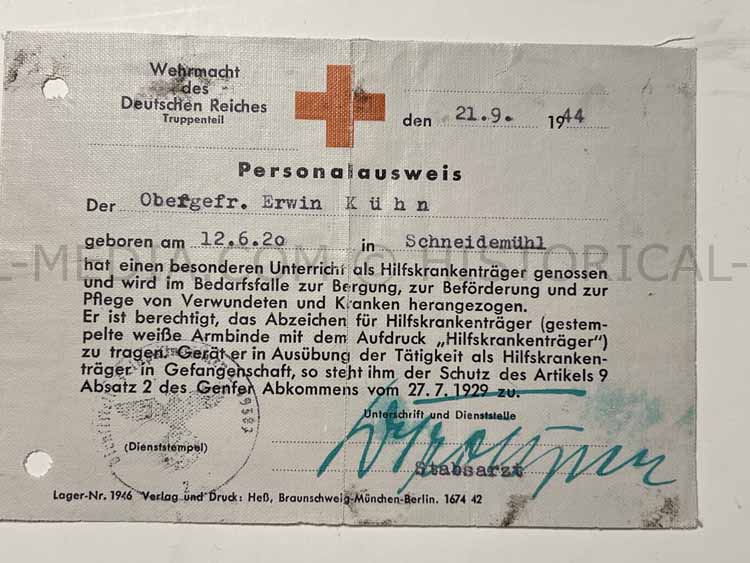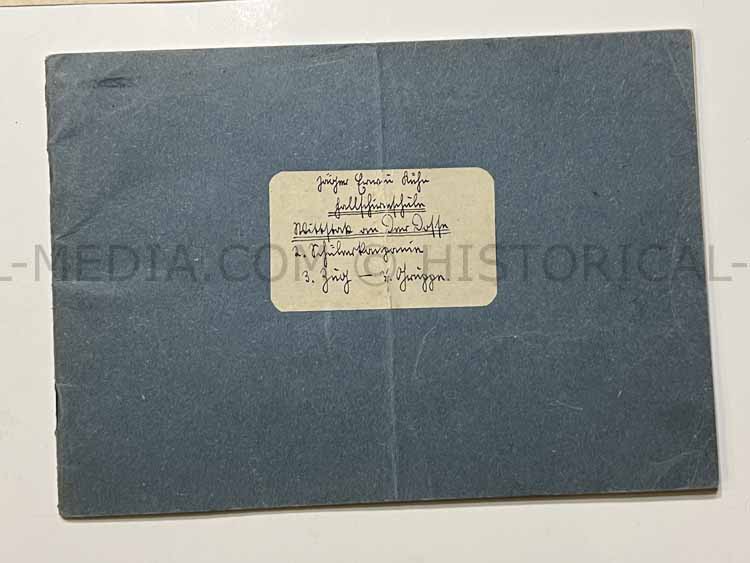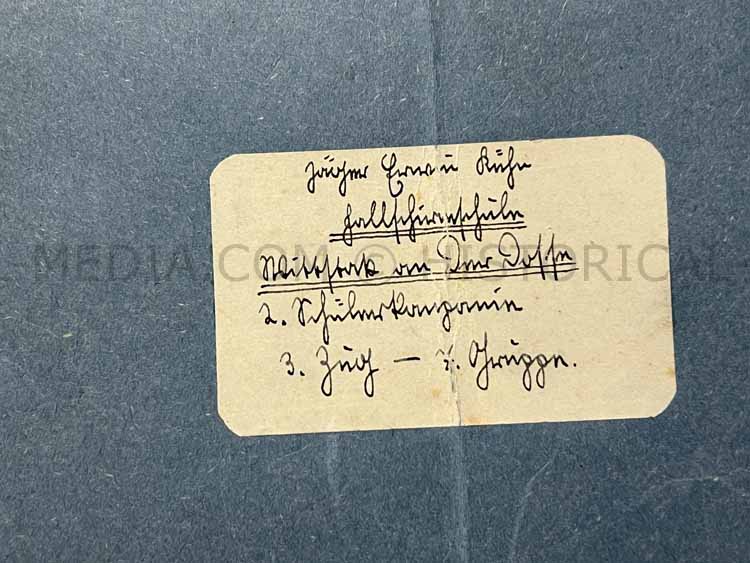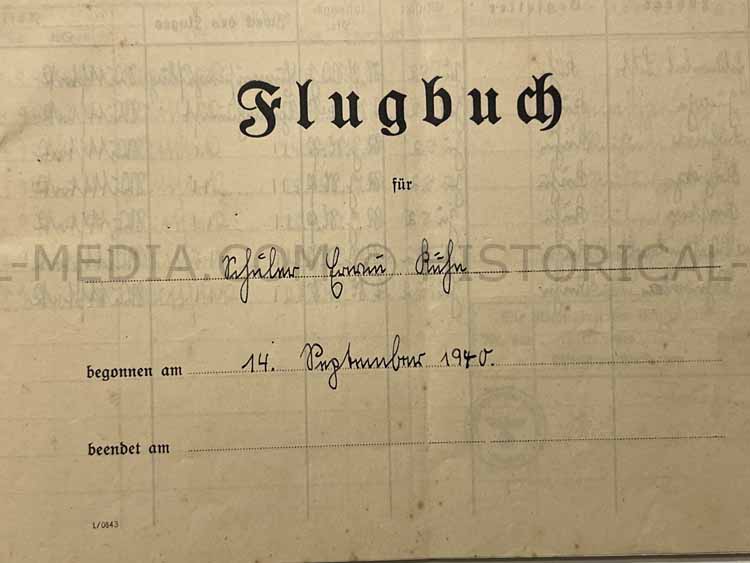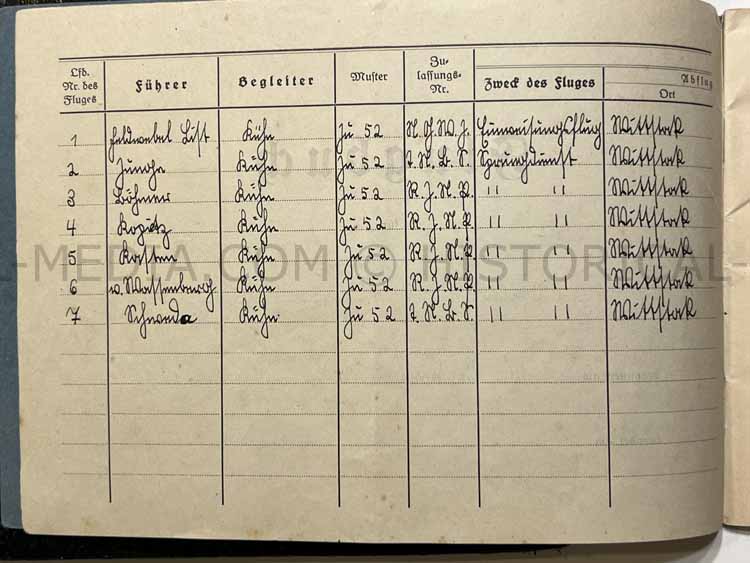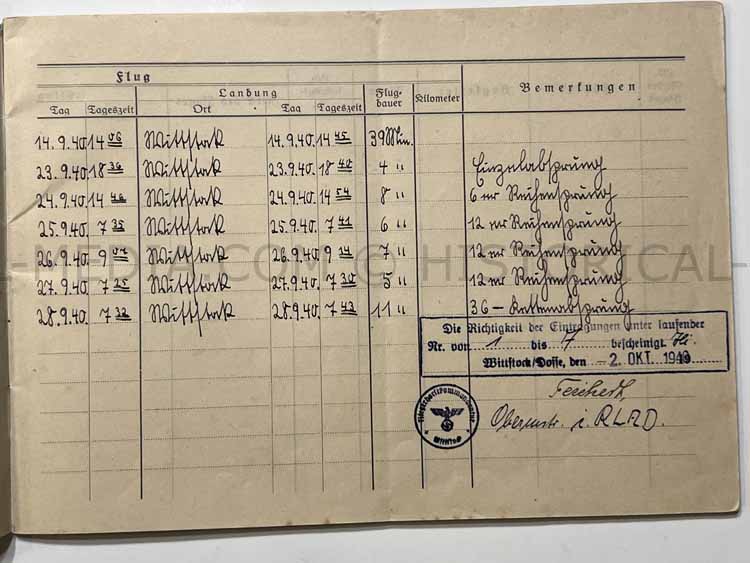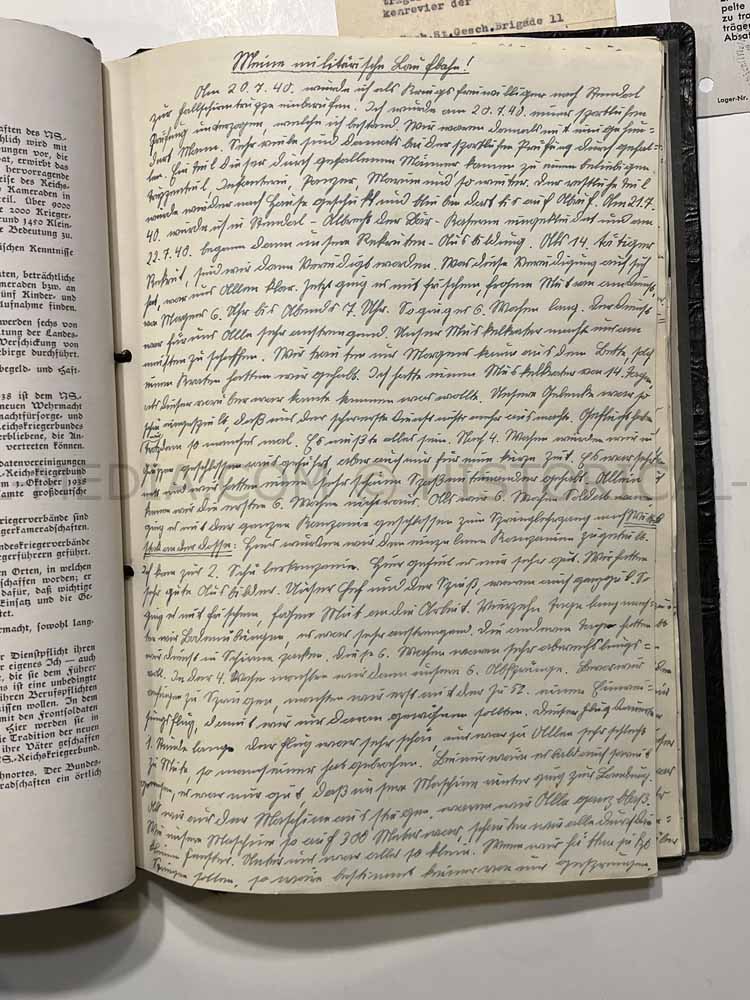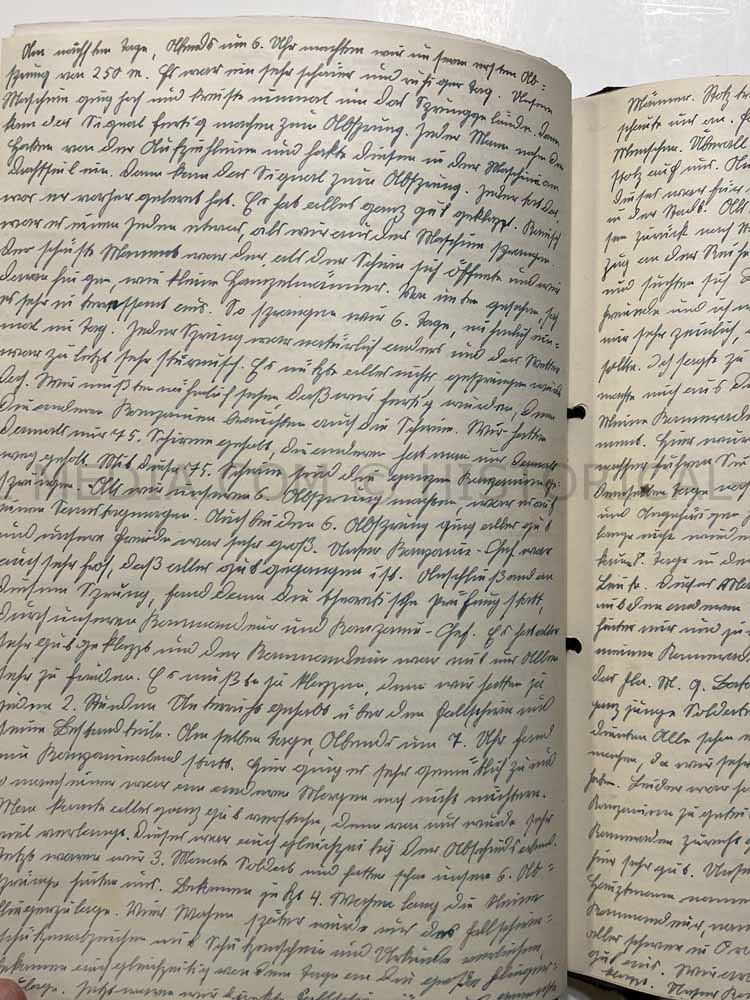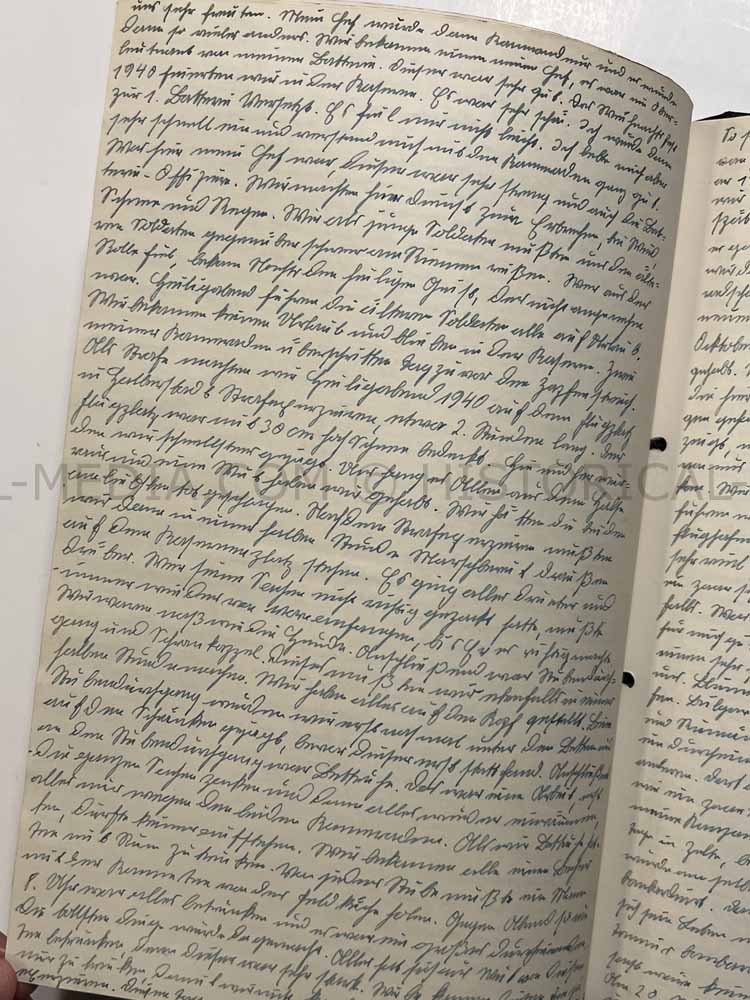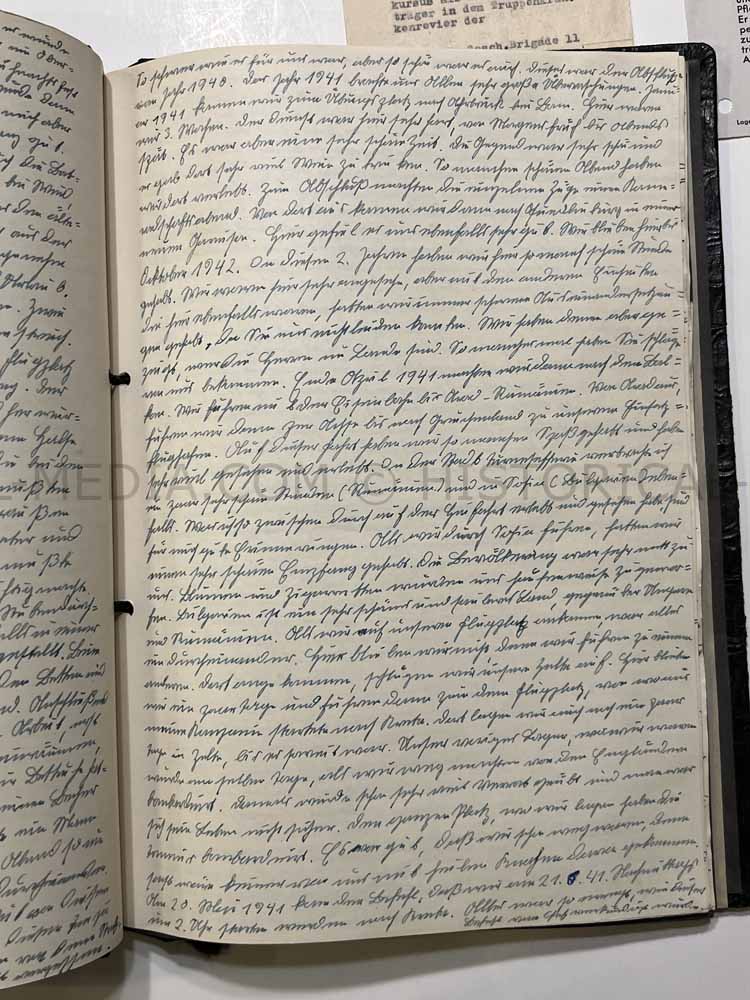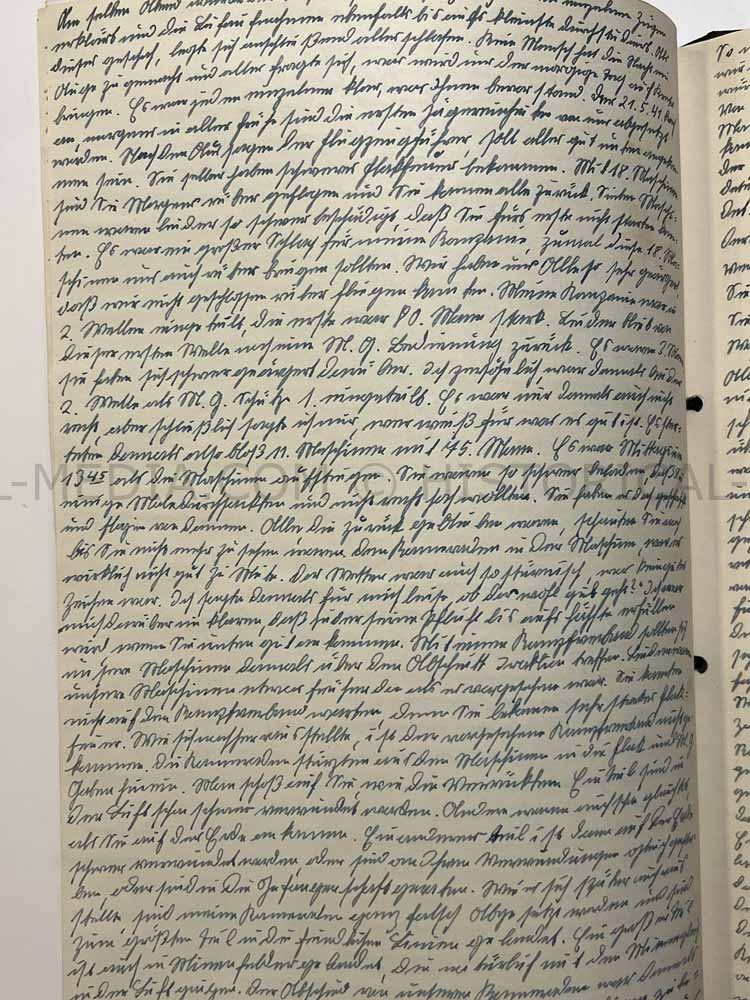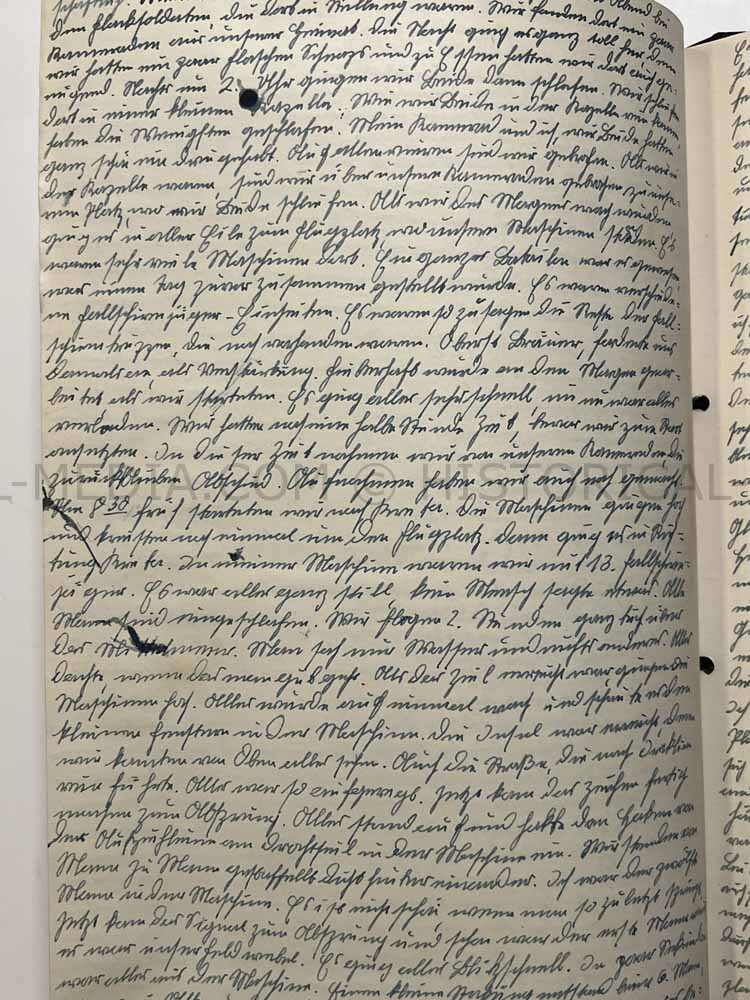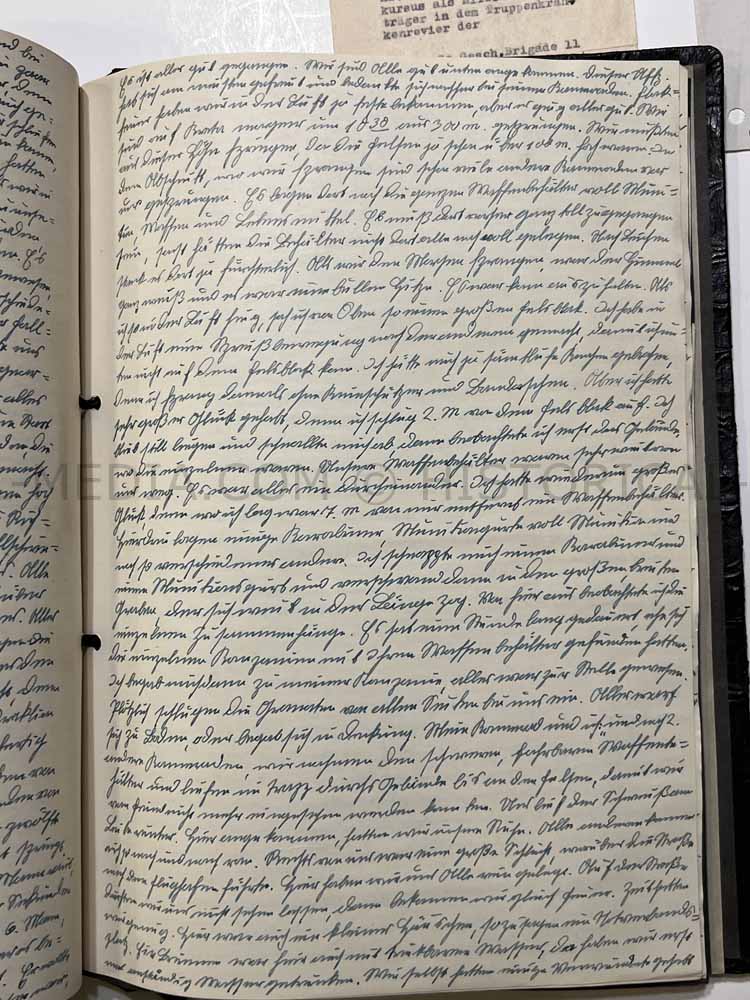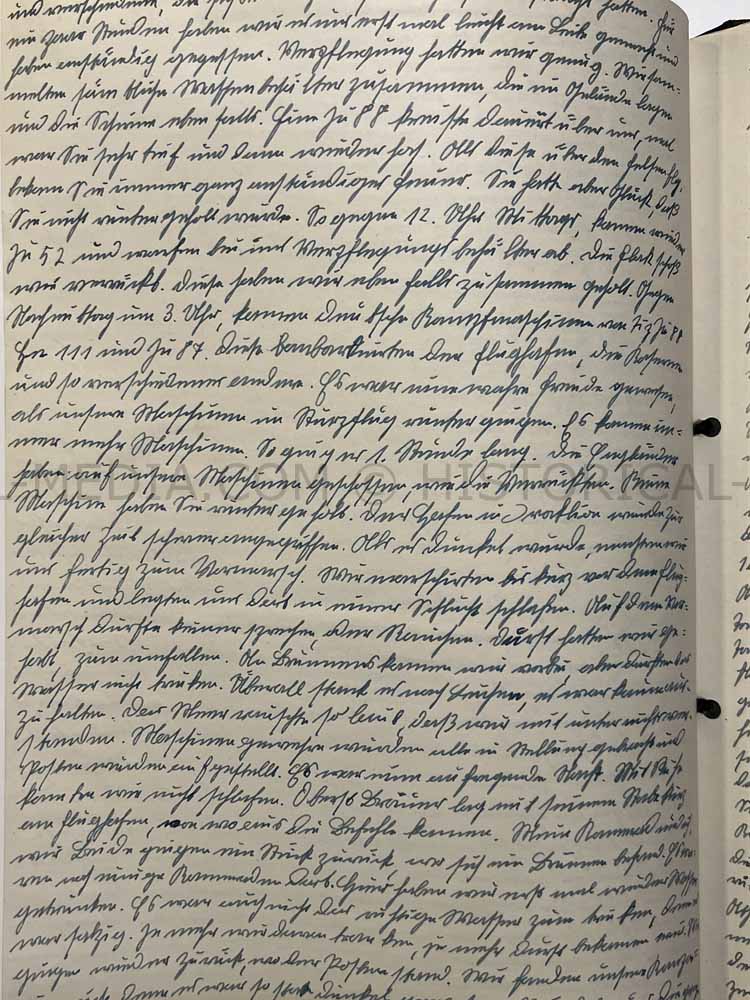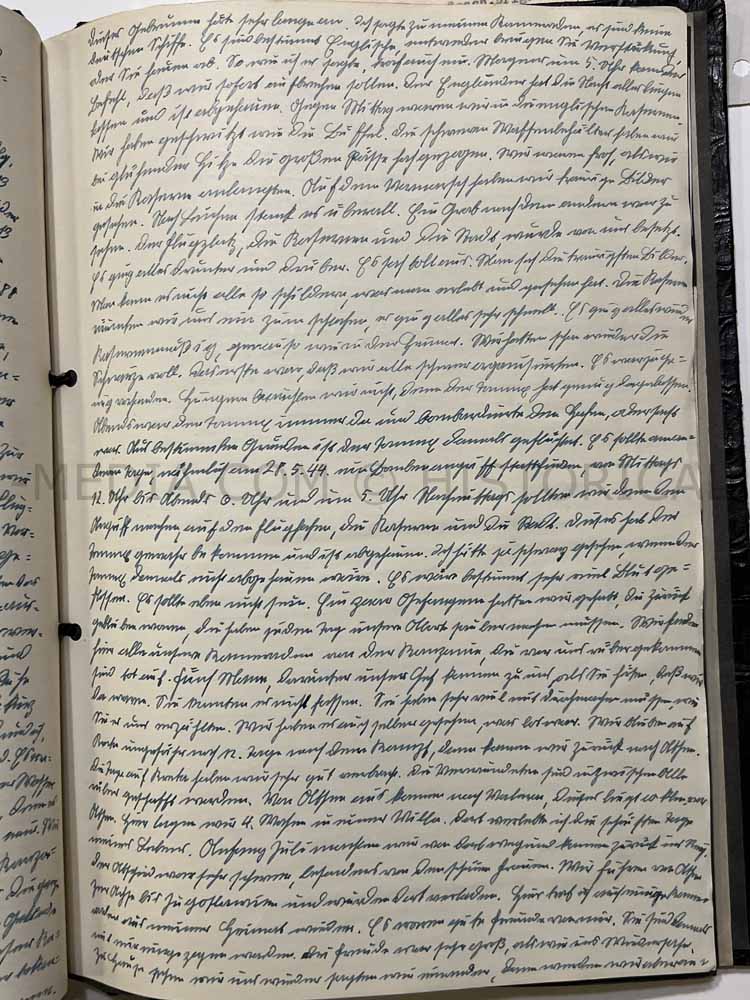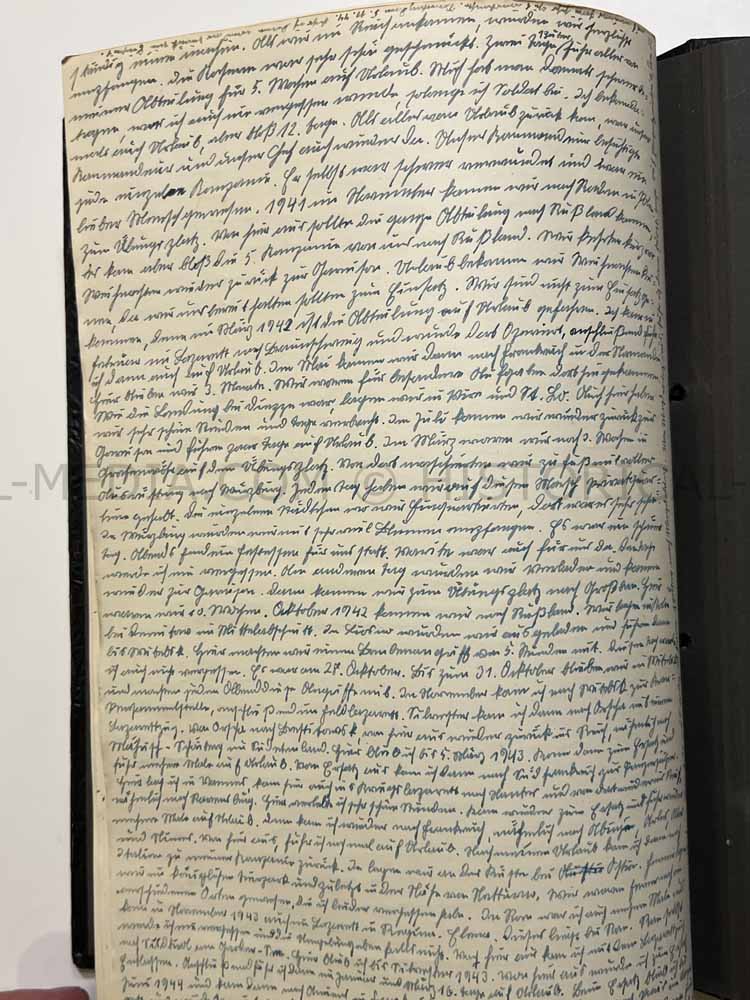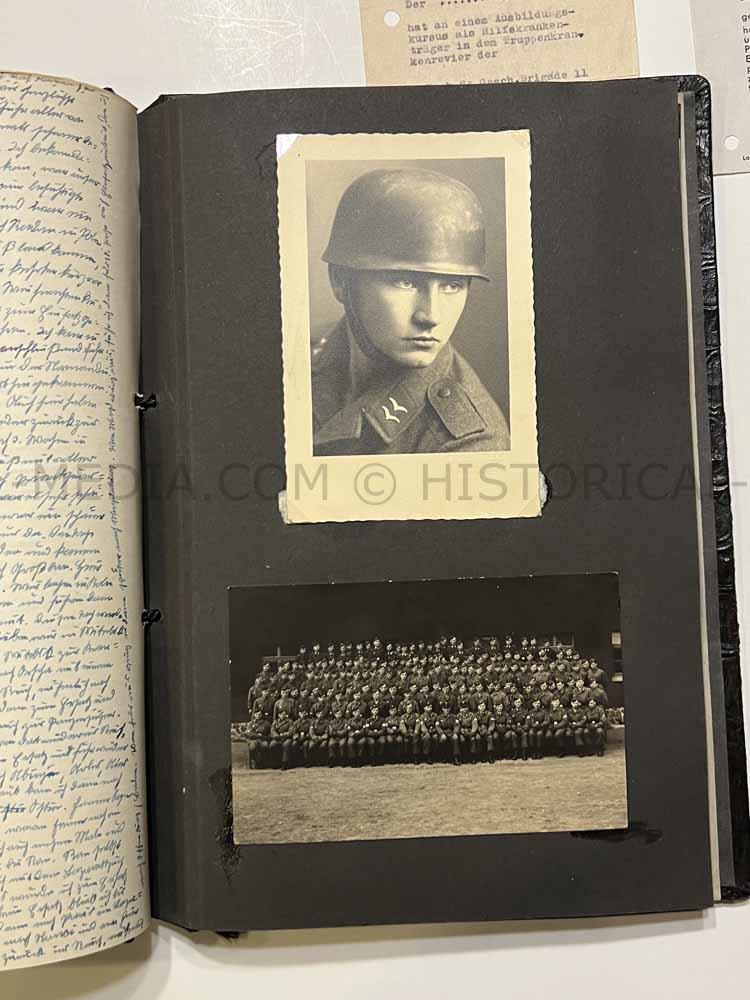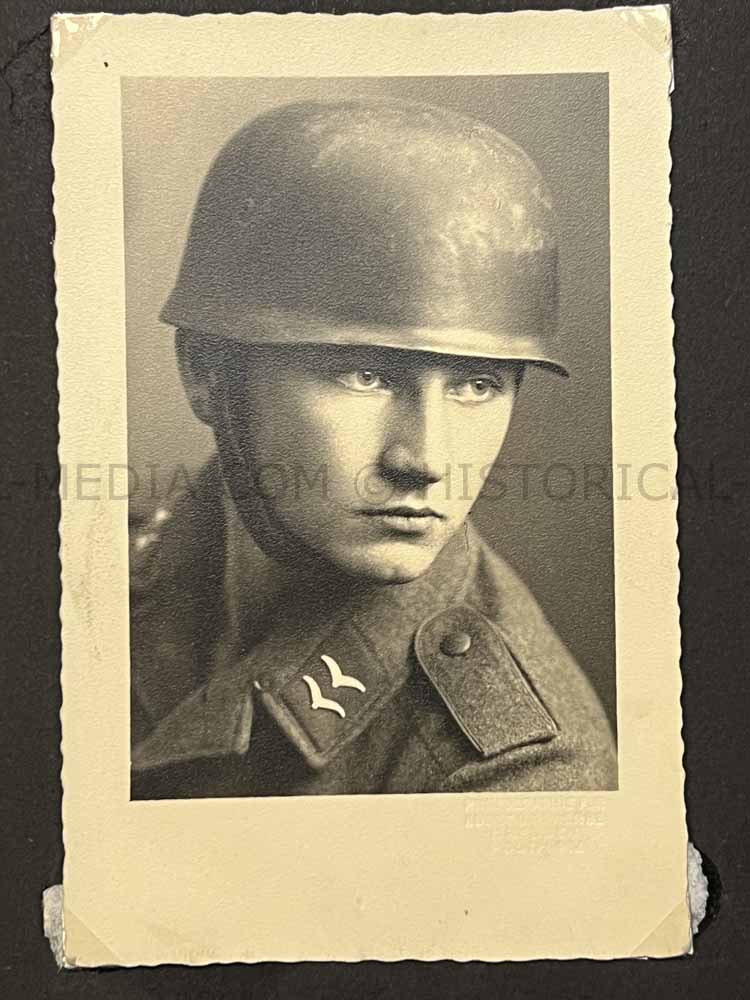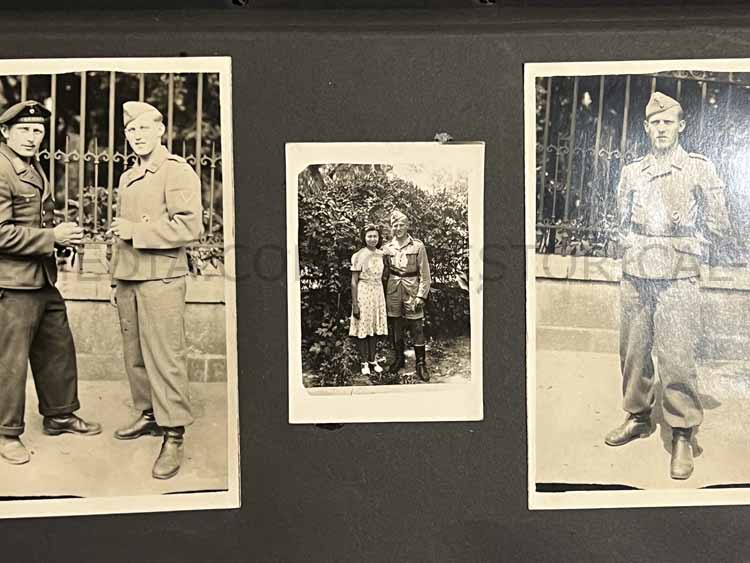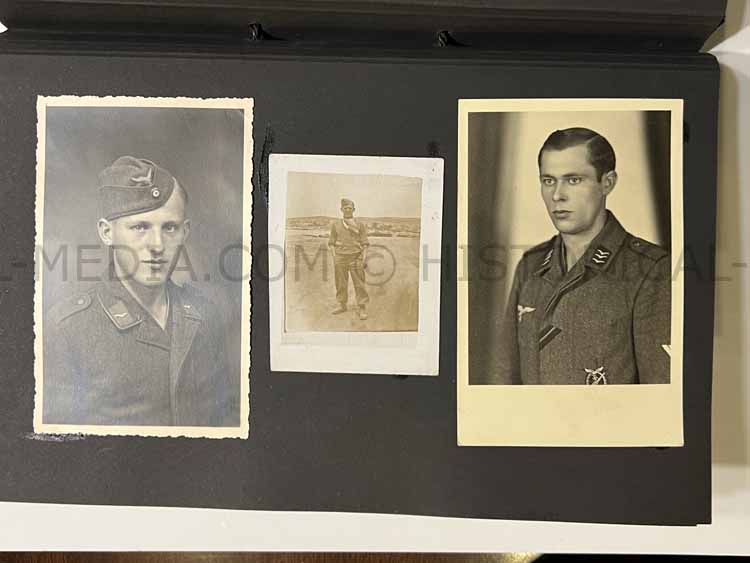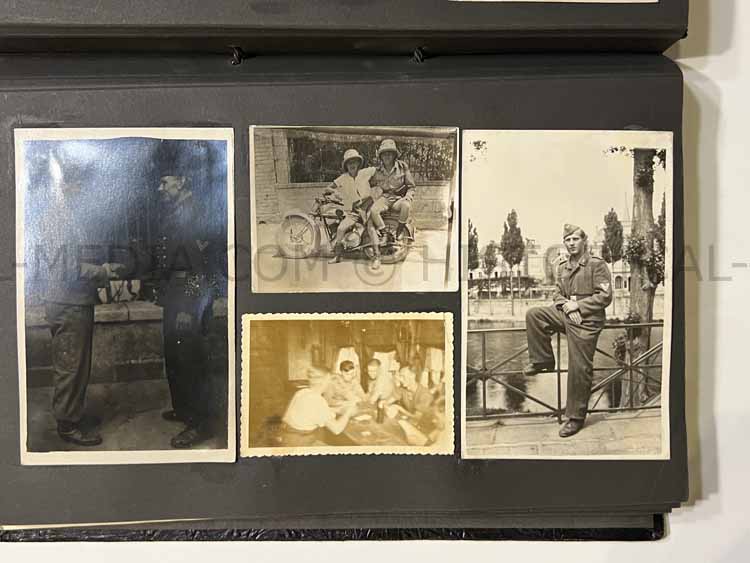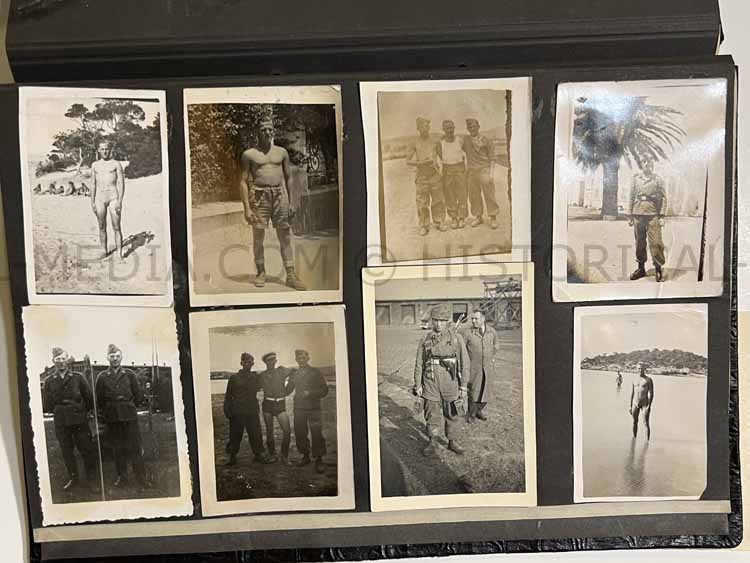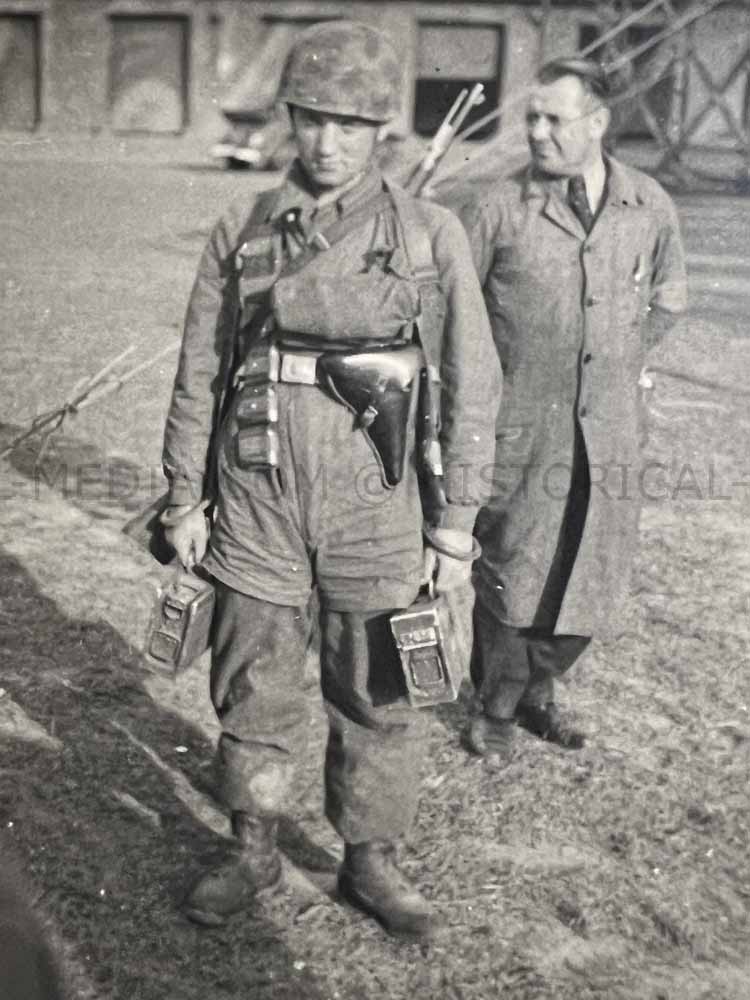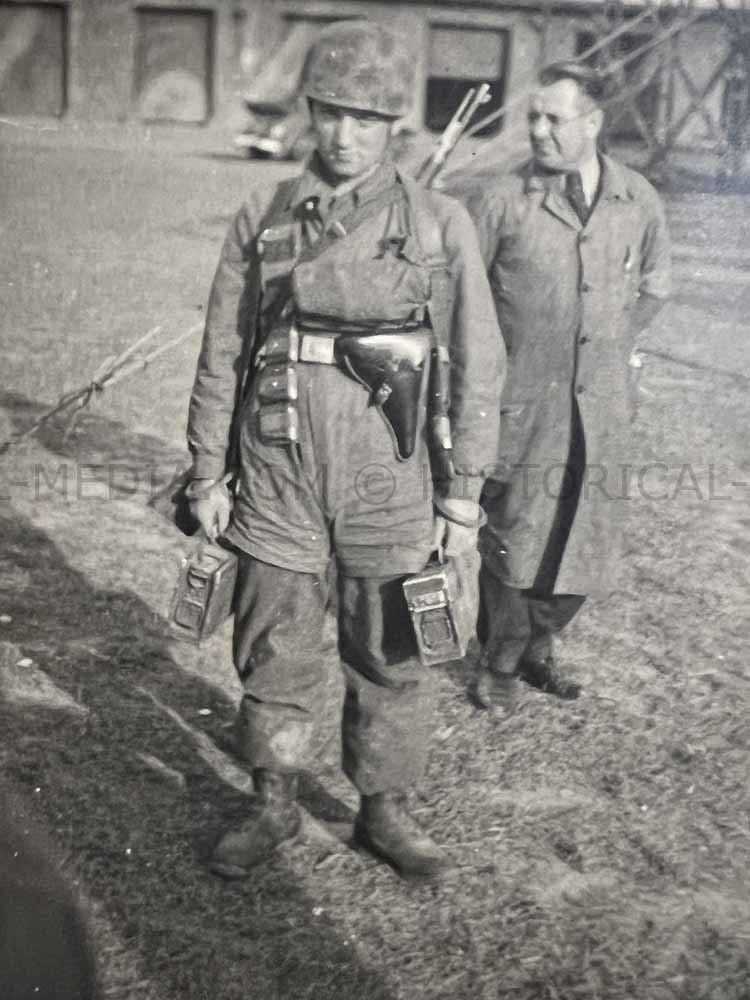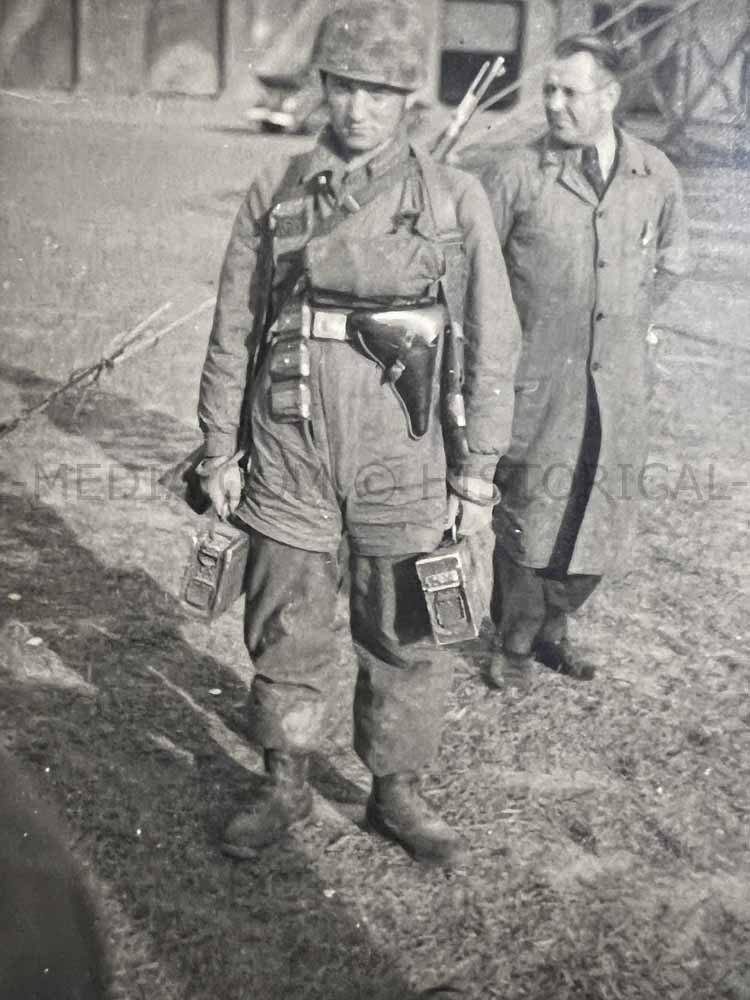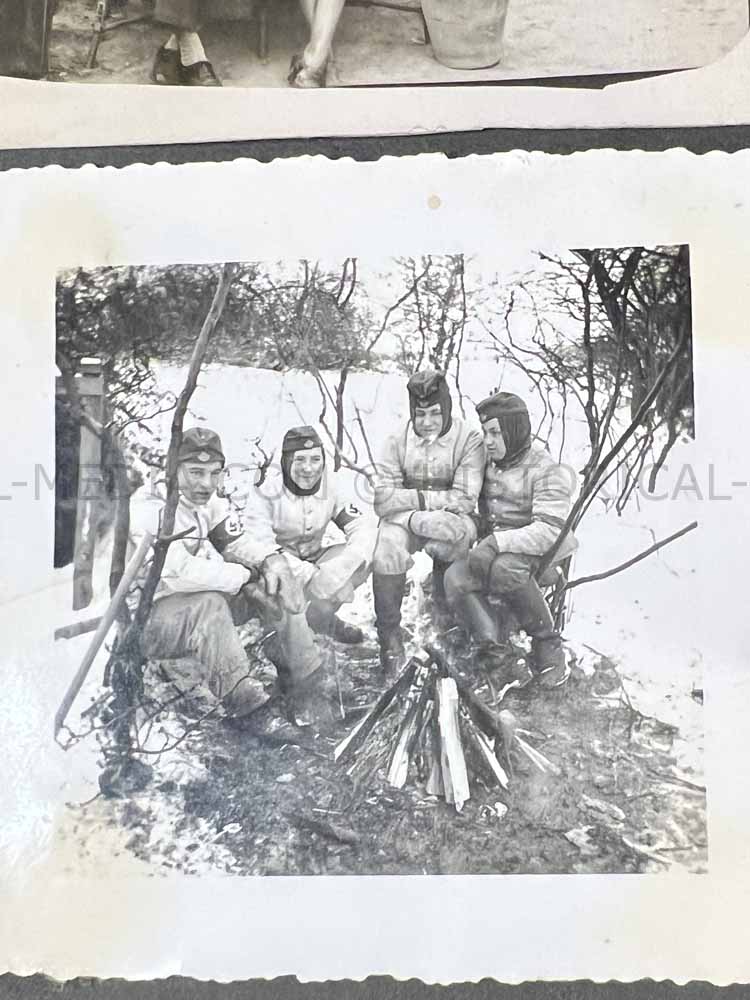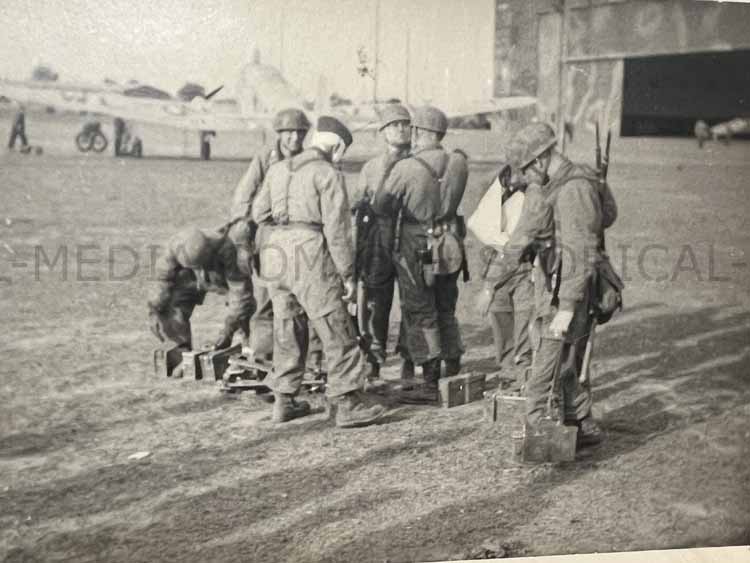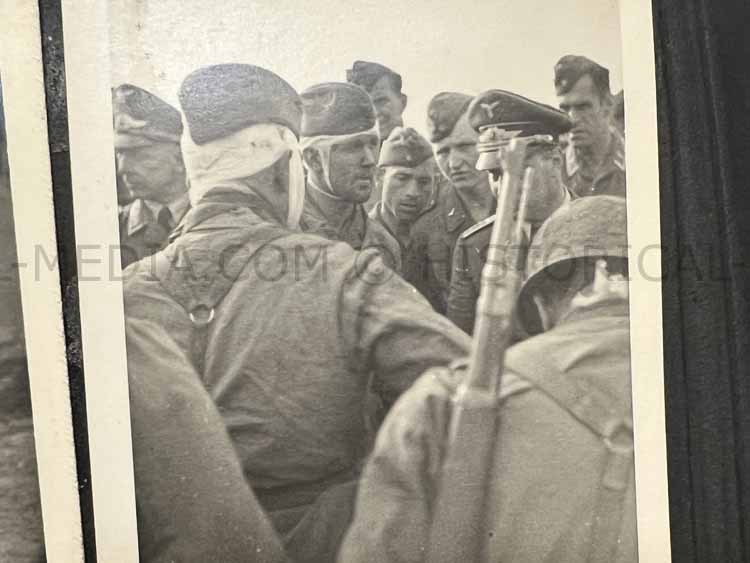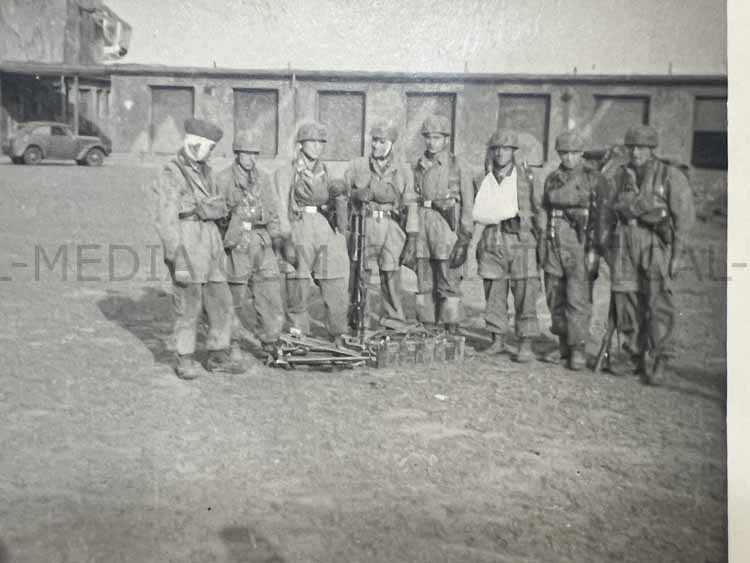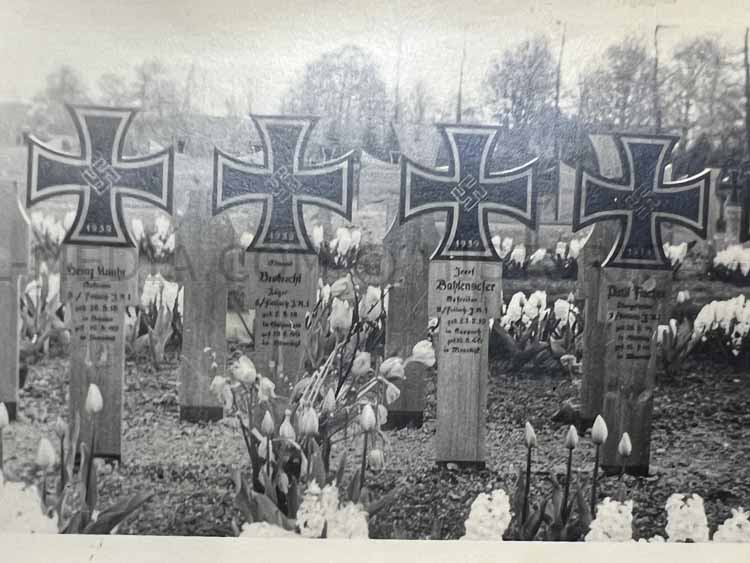
U. FALLSCHIRMJAEGER Photo Album, Diary, Flugbuch & Document Grouping - Fallschirmjaeger Sturmgeschütz Brigade 11
Grouping named to Erwin KÜHN. Comes with his rare FJ Jump Qualification Flugbuch, Hilfskrankentraeger IDs, one with rare unit - Fallschirmjaeger Sturmgeschütz Brigade 11 - important unit during the Normandy Campaign and Ardennes Offensive, Photo Album has a very lengthy hand-written account of his service, super studio portrait photo of him in FJ Helmet(!), good studio portraits of comrades, the man wearing Italian Camo pants, photos of him in FJ badge, tropical FJ uniforms, comrades graves and more!
$1450
Fallschirm-Sturmgeschütz-Brigade 1 and Fallschirm-Sturmgeschütz-Brigade 2 was established in January 1944 with personnel that had volunteered for and already belonged to Fallschirm units. They were detached for Sturmartillerie training. The officers and drivers were sent to the Sturmgeschütz Schule at Burg while the gunners were sent to Altengrabow. Additional personnel were also sent to Sturmgeschütz-Ersatz-Abteilung 300 at Neiße. These personnel continued training until 24 March 1944 and then at the end of the month the two Brigades were established. In June 1944 they were renamed as Fallschirm-Sturmgeschütz-Brigade XI and Fallschirm-Sturmgeschütz-Brigade XII. They were also known as the Green Devil Brigades.
Fallschirm-Sturmgeschütz-Brigade XI
Fallschirm-Sturmgeschütz-Brigade XI was commanded by Hauptmann Schäber and the unit was transferred to France. It continued it organization at Melun where it received 22 StuG IIIs and 9 StuH 42s. From there it went to Donmarie and Dontilly.
The brigade first went into action after the Allied breakthrough at Nancy where it was subsequently destroyed although they managed to destroy a few Allied tanks. The survivors formed a cadre under Oberleutnant Hollunder for rebuilding. It was placed under the operational control of the 5. Fallschirm-Jäger-Division and it was again employed on the southern flank of the attacking spearhead in the Ardennes Offensive under the 7.Armee. It fought across the Clerf River and advanced on Wiltz. On 22 December they advanced through Vaux les Rosiéres to 15 kilometers south of bastogne. They continued to fight around Bastogne but suffered heavy losses in fighting with the US 4. Armored-Division. The remnants made it back to Germany and asfter some rebuilding were employed against the Soviets and went into Soviet captivity on 8 May 1945.


